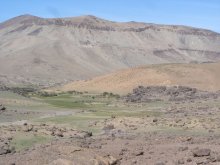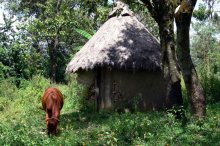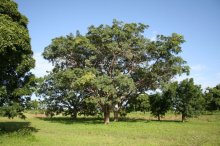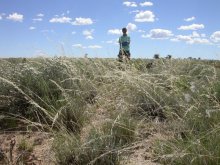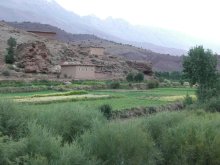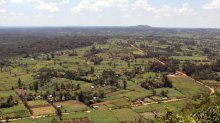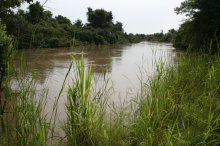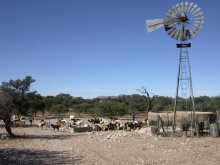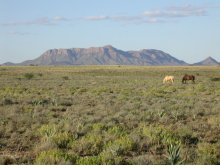The BIOTA AFRICA network comprises the proposal of numerous African and German research projects which, for many of their scientific aims, use a joint, interdisciplinary and integrative approach to analyse the change of biodiversity on the African continent.
The overall goal of the project is to create scientific support for decision makers for conservation planning and for a feasible and sustainable management of the use of biodiversity.
Integration of natural and socio-economic approaches
The feasibility of any sustainable management of biodiversity has to be defined from both, a natural and a socio-economic viewpoint. Therefore, natural and socio-economic contributions have been integrated in this project.
Enhancement of baseline knowledge on the change of biodiversity
Baseline knowledge on the change of biodiversity is still insufficient, especially with respect to the change of biodiversity on the African continent. Before defining goals for a sustainable management of biodiversity, science has to provide the necessary information on the inventories, the spatial and temporal variability, the abiotic and biotic driving factors, the intensity, direction and processes of change driven by human activities, but also the causalities and mechanisms of dynamics within natural systems.
Measurements and analyses on standardised Biodiversity Observatories
In the past, isolated case studies have lead to discrediting biodiversity research as being full of data but scarce of results. Based on the fact that biodiversity as well as land use strongly differ over climatic and vegetation zones, this project shall not add another case study, but aims at an investigation of biodiversity and its change along a transect which follows the most important climatic gradient of Africa: the humidity gradient. Therefore biodiversity is analysed along a transect form tropical rain forests to arid savannas in West Africa and from dry forests via arid savannas to the Mediterranean winter rainfall region in southern Africa. While on these continental transects mainly planar landscapes within large scale biomes will be investigated, aiming at a high potential to extrapolate results, in East Africa a degradation gradient in a more complex strongly used landscape with relicts of rainforests will be analysed. Most of the measurements and analyses are conducted on standardised Biodiversity Observatories that allow for a maximum of extrapolation potential as well as comparability of results between different regions and land use systems, regarding the scale of the investigated area, spatial scale steps and also the applied methods of measurement. During phase I an II already, the resulting network of subprojects and investigations gained a pioneering role in relation to other international and regional programs (DIVERSITAS, BIODISCOVERY, SAEON, ELTOSA, GEOSS), by defining standards for biodiversity monitoring.
Investigation of the impact of land use
Land use and its side effects such as disturbances and local environmental changes have a high impact on the change of biodiversity. On the other hand, land use practise itself depends on biodiversity as a resource. To investigate these feedback mechanisms, a strong socio-economic focus has been established within the BIOTA network. Socio-economic studies will analyse the frame conditions for human decisions and their change, the dependence of humans on natural resources and their strategies of land use. Modelling and comparative analysis of realistic scenarios that integrate ecological, biotic and socio-economic dynamics will be used as a tool to explore scientifically sound and socio-economically feasible solutions for biodiversity management.
Modelling the reality
Within phase III the integration of findings with the help of models will be strongly intensified at various levels. These models aim at the development of management tools and to provide user oriented deliverables such as risk assessment maps or educational and management support tools.
Experiments on restoration and rehabilitation
Based on already achieved results a strong experimental component on the restoration and rehabilitation of degraded biodiversity, coupled with studies on the role of biodiversity for the stability of ecosystems and land use will be turned into products for users. Similarly, alternative uses of biodiversity shall be explored with respect to their practical feasibility and the socio-economic consequences.
Transformation of knowledge for decision makers
The transformation of knowledge for decision makers will be of high importance during phase III. Participatory definition of goals, information transfer and the analysis of feedback will form important components.






 Go to the WeatherNet
Go to the WeatherNet